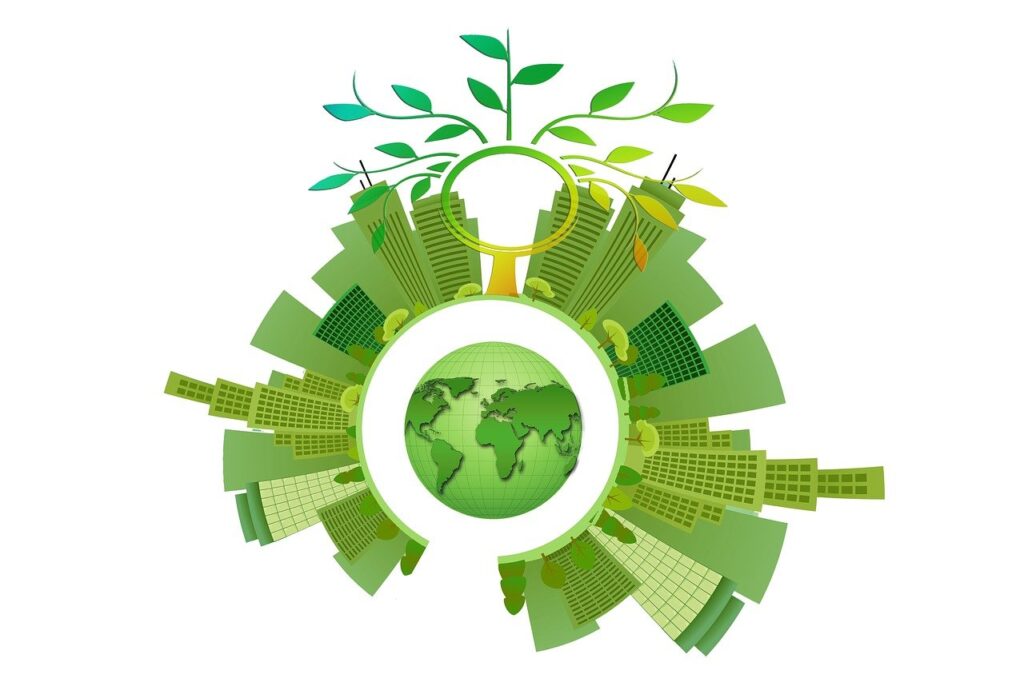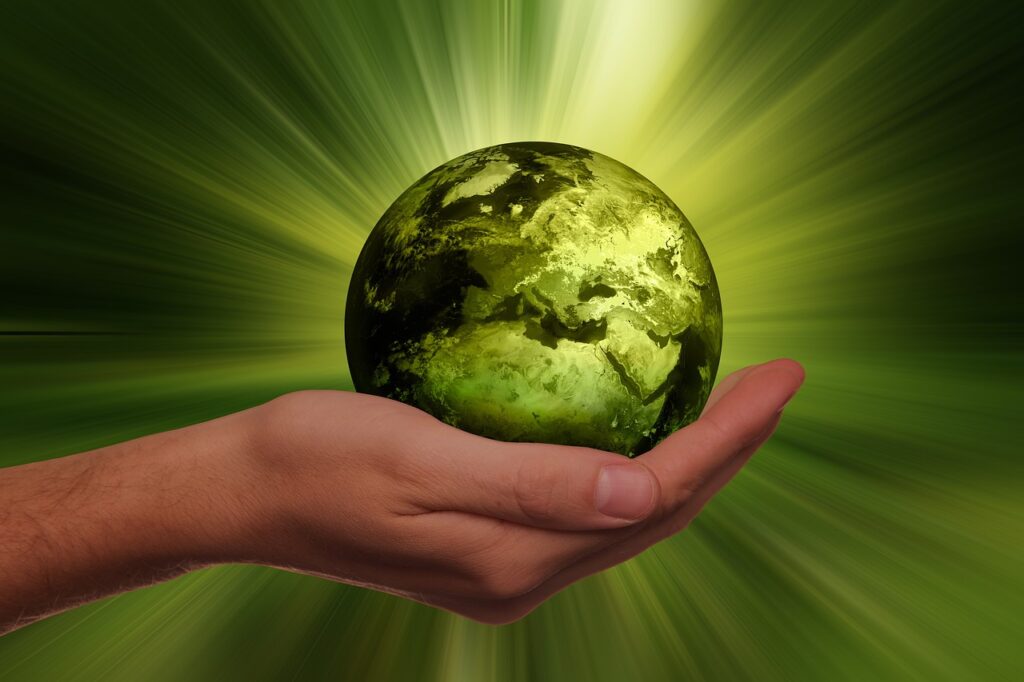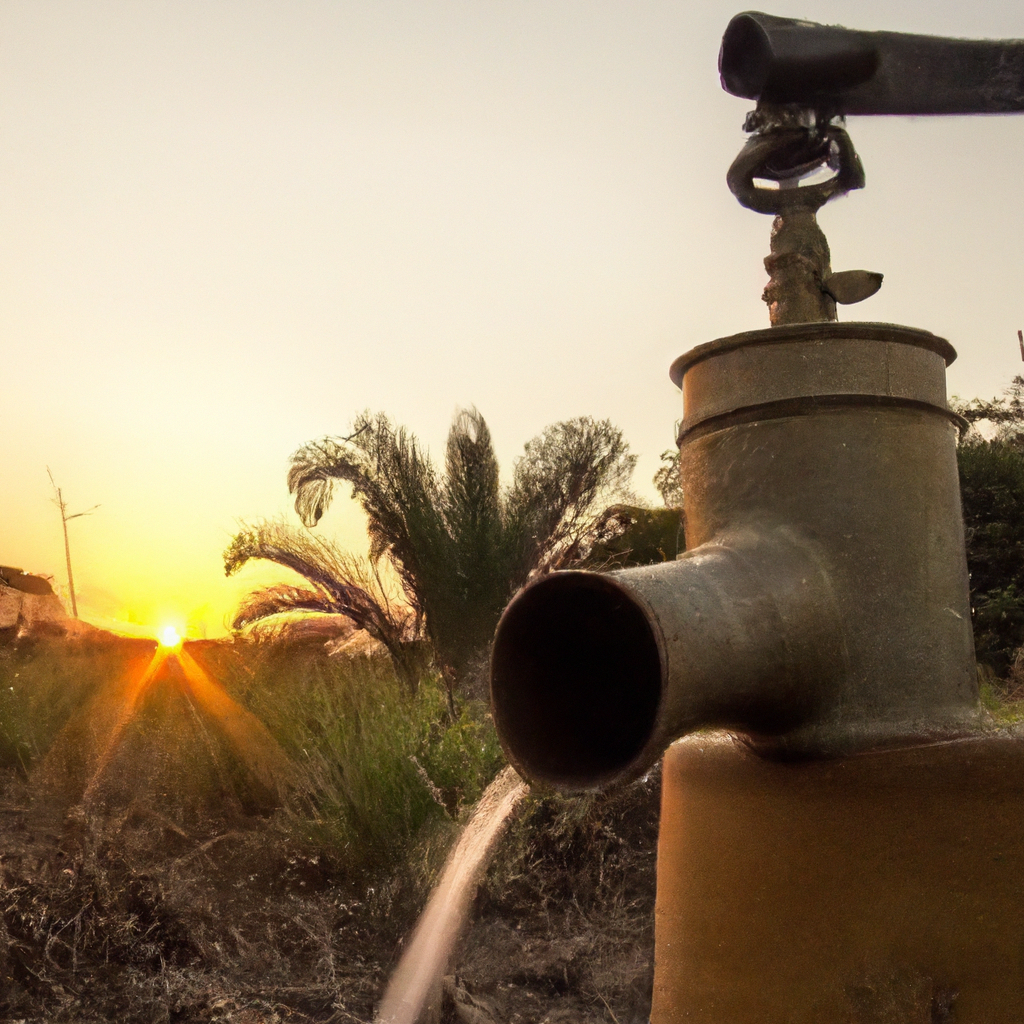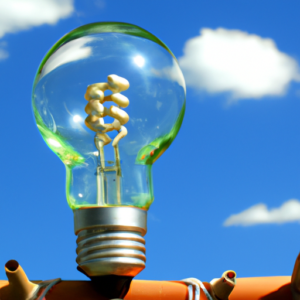How Do Off-Grid Communities Source Water And Power: Introduction
Imagine living in a community that is completely self-sustaining, disconnected from the traditional power grid and water supply. In these off-grid communities, residents rely on innovative and sometimes unconventional methods to source both water and power. But how do off-grid communities source water and power? From harnessing the energy of the sun and wind to implementing rainwater collection systems, the residents have found fascinating ways to meet their basic needs without relying on outside sources. In this article, we will explore the ingenious methods that off-grid communities employ to source water and power, shedding light on the remarkable resilience and resourcefulness of these self-sufficient communities.
Water Sources
Rainwater Harvesting
One of the main ways that off-grid communities source water is through rainwater harvesting. This involves collecting and storing rainwater that falls onto rooftops and other surfaces. Rainwater is typically collected in gutters and directed into storage tanks or containers. It can then be used for various purposes such as drinking, cooking, bathing, and irrigation. Rainwater harvesting is a sustainable and cost-effective method of obtaining water, especially in areas with limited access to other water sources.
Well Water
Another common water source for off-grid communities is well water. Wells are drilled or dug deep into the ground to access underground water reserves. These wells can be hand-pumped or powered by solar or wind energy to bring the water to the surface. Well water is often used for drinking, cooking, and other household needs. It offers a reliable and independent water supply, as long as the well is properly maintained and the groundwater is not overused.
River or Stream Water
For off-grid communities located near rivers or streams, these water sources can be utilized for their water needs. River or stream water can be collected directly for immediate use or stored in tanks or containers. However, it is important to note that river or stream water may require additional filtration or treatment to ensure its safety for drinking and other purposes. Regular testing of the water quality is also essential to prevent any potential health risks.
Spring Water
Another natural water source for off-grid communities is spring water. Springs are formed when groundwater naturally flows to the surface. Spring water is often considered pure and clean, as it has not been contaminated by various pollutants. However, it is still recommended to have the spring water tested to ensure its safety for consumption. Springs can provide a consistent and reliable source of water for off-grid communities, especially if they are located in areas with abundant underground water sources.
Groundwater
Off-grid communities can also source water from underground reservoirs, known as groundwater. Groundwater can be accessed through wells, boreholes, or underground springs. This water source is typically free from surface contamination and can be a reliable and sustainable water supply. However, it is important to ensure the proper management and conservation of groundwater to prevent depletion and contamination. Regular water quality testing is also necessary to ensure the safety of the water for consumption.
Water Delivery Services
In some cases, off-grid communities may rely on water delivery services to supplement their water needs. These services involve the transportation and supply of water from external sources, such as municipal water supplies or nearby water treatment plants. Water delivery services can be useful for communities that do not have access to consistent or reliable water sources. However, they may come at a cost and may not be a sustainable long-term solution for off-grid living.
Water Storage and Treatment
Water Storage Tanks
Water storage tanks are essential for off-grid communities to store water obtained from various sources. These tanks can range in size and material, depending on the community’s water needs and available space. Common materials for water storage tanks include plastic, fiberglass, and concrete. It is important to properly maintain and clean the tanks to ensure the stored water remains clean and safe for use.
Water Pumps
Water pumps are used to transport water from its source to storage tanks or directly to the community’s water distribution system. Depending on the water source and location, different types of water pumps may be used, such as submersible pumps, hand pumps, or solar-powered pumps. Water pumps are essential for off-grid communities to access and distribute water effectively and efficiently.
Water Filters
To ensure the safety and quality of water, off-grid communities often utilize water filters. Water filters can remove impurities, sediment, bacteria, and other contaminants from the water. Different types of water filters are available, including carbon filters, ceramic filters, and reverse osmosis filters. It is important to choose the appropriate water filter based on the specific water quality and needs of the community.
Water Purifiers
In addition to water filters, water purifiers are often used by off-grid communities to further treat the water and make it safe for consumption. Water purifiers can remove harmful pathogens, viruses, and other microbiological contaminants. Common types of water purifiers include ultraviolet (UV) purifiers, ozone purifiers, and chemical purifiers. It is crucial to regularly maintain and replace the purification systems to ensure their effectiveness.
Water Treatment Systems
For off-grid communities that depend on water sources with poor water quality, water treatment systems may be necessary to make the water safe and potable. These systems can include a combination of filters, purifiers, disinfection methods, and chemical treatments. Water treatment systems can vary in complexity and size, depending on the specific water quality challenges faced by the community. Regular monitoring and maintenance of the system are essential for long-term effectiveness.

Check Out Our Top Eco Friendly Product Picks On Amazon Here
Renewable Energy Sources
Solar Power
Solar power is a popular renewable energy source for off-grid communities. It involves capturing the energy from sunlight and converting it into electricity through solar panels or solar thermal systems. Solar power systems can provide electricity for various needs, including lighting, appliances, and water pumps. With advancements in solar technology, it has become more affordable and efficient, making it a viable option for off-grid power generation.
Wind Power
Wind power is another renewable energy source commonly used by off-grid communities. It utilizes the kinetic energy of the wind to generate electricity through wind turbines. Wind power systems can be particularly beneficial for communities in windy areas. They can provide a consistent source of electricity, especially when combined with energy storage solutions such as batteries. Proper placement and maintenance of wind turbines are crucial for optimal energy generation.
Hydroelectric Power
Off-grid communities located near rivers or streams can harness the power of flowing water to generate electricity through hydroelectric power systems. Micro hydro systems, water wheels, turbines, and generators are components of such systems. Hydroelectric power systems can provide a reliable and continuous source of electricity, particularly if there is a consistent water flow. However, the installation and maintenance of these systems can be complex and require careful planning.
Geothermal Power
Geothermal power utilizes the heat from the Earth’s core to produce electricity. Geothermal heat pumps, binary cycle power plants, dry steam power plants, flash steam power plants, and triple flash power plants are some examples of geothermal power systems. Off-grid communities located in areas with geothermal activity can benefit from the constant and reliable energy provided by geothermal sources. However, geothermal power systems may require specialized equipment and expertise for installation and upkeep.
Biomass Energy
Biomass energy involves utilizing organic materials, such as wood, agricultural waste, and biofuels, to produce heat or electricity. Wood burning stoves, wood gasification systems, biogas digesters, biomass boilers, and biomass gasification systems are some examples of biomass energy systems. Off-grid communities with access to biomass resources can use them as a sustainable and renewable energy source. However, proper handling and storage of biomass fuel is important to prevent environmental pollution and ensure efficient energy generation.
Biofuels
Biofuels are fuels produced from renewable sources such as plants and algae. Biodiesel, ethanol, vegetable oil conversion, and algae-based biofuels are common biofuel options. For off-grid communities, biofuels can be used as an alternative to traditional fossil fuels for transportation and energy generation. However, the production and distribution of biofuels may require specific equipment and infrastructure.
Solar Power Systems
Photovoltaic (PV) Panels
Photovoltaic (PV) panels, also known as solar panels, are the core component of solar power systems. They convert sunlight into direct current (DC) electricity through the photovoltaic effect. PV panels are made up of multiple solar cells connected in series or parallel to generate the desired voltage and current. Off-grid communities can install PV panels on rooftops or in dedicated solar arrays to capture sunlight and generate electricity.
Solar Charge Controllers
Solar charge controllers are an essential part of solar power systems. They regulate the charging and discharging of batteries connected to the PV panels. Solar charge controllers help prevent overcharging or deep discharging of batteries, prolonging their lifespan. They also feature various protection mechanisms to ensure the safety and efficiency of the solar power system.
Inverters
Inverters are used in solar power systems to convert the direct current (DC) electricity generated by the PV panels into alternating current (AC) electricity. This AC electricity is suitable for powering household appliances and other electrical devices. Inverters come in different types, including string inverters, micro inverters, and hybrid inverters. Off-grid communities rely on inverters to convert solar energy into usable electricity.
Batteries
Batteries are crucial for storing excess electricity generated by solar power systems. They provide a reliable source of electricity during periods of low sunlight or high electricity demand. Off-grid communities use deep cycle batteries, such as lead-acid or lithium-ion batteries, for energy storage. Proper battery maintenance is essential to ensure their longevity and optimal performance.
Solar Tracking Systems
Solar tracking systems allow PV panels to follow the movement of the sun throughout the day, maximizing their exposure to sunlight. These systems use sensors and actuators to adjust the angle and orientation of the PV panels. Solar tracking systems can significantly increase the energy output of solar power systems by optimizing the sunlight absorption. However, they require additional equipment and maintenance compared to fixed PV panel installations.

Wind Power Systems
Wind Turbines
Wind turbines are the primary component of wind power systems. They consist of blades or rotors that capture the energy from the wind and convert it into rotational motion. This motion is then used to generate electricity through a generator. Off-grid communities use small-scale wind turbines to generate electricity for their energy needs. Careful consideration of wind patterns, turbine size, and installation is crucial for maximizing energy production.
Wind Charge Controllers
Wind charge controllers regulate the charging and discharging of batteries in wind power systems. They prevent overcharging or deep discharging of batteries, ensuring their longevity and efficient operation. Wind charge controllers, similar to solar charge controllers, feature protective mechanisms to safeguard the wind power system.
Inverters
In wind power systems, inverters convert the electrical output of the generator from direct current (DC) to alternating current (AC), making it compatible with household appliances and electrical devices. Different types of inverters can be used, depending on the specific requirements of the off-grid community. Regular maintenance and monitoring of the inverter are necessary to maintain the system’s performance.
Batteries
Batteries are essential in wind power systems to store excess electricity generated when the wind is strong but the energy demand is low. Off-grid communities utilize deep cycle batteries to store the wind-generated electricity for later use. Proper battery management, including regular maintenance and monitoring, is crucial for maintaining the availability of stored energy.
Hydroelectric Power Systems
Micro Hydro Systems
Micro hydro systems utilize the flow of water from rivers or streams to generate electricity. These systems typically consist of a turbine, a generator, and a control system. Water flow is directed through the turbine, causing it to rotate and generate mechanical energy. The generator then converts this mechanical energy into electrical energy. Micro hydro systems can provide a consistent and reliable source of electricity for off-grid communities located near suitable water sources.
Water Wheels
Water wheels are a traditional method of harnessing the power of flowing water for electricity generation. They consist of a large wheel with blades or buckets attached to it. The force of the flowing water causes the wheel to rotate, which drives a generator to produce electricity. Water wheels can be an effective and environmentally friendly option for off-grid communities with access to a consistent water flow.
Turbines
Turbines play a key role in hydroelectric power systems by converting the energy from flowing water into rotational motion. Different types of turbines, such as Pelton turbines, Francis turbines, and Kaplan turbines, are used depending on the specific characteristics of the water flow. Proper turbine selection and maintenance are crucial for maximizing energy generation and system efficiency.
Generators
Generators are essential components of hydroelectric power systems as they convert the mechanical energy from the turbines into electrical energy. Different types of generators, such as synchronous generators and asynchronous generators, can be used in hydroelectric power systems. Regular maintenance and monitoring of the generators are necessary to ensure their reliable and efficient operation.
Power Storage
Off-grid communities with hydroelectric power systems may utilize power storage solutions such as batteries or pumped storage systems. These storage systems store excess electricity generated during periods of low energy demand and release it during high-demand periods. By incorporating power storage, off-grid communities can have access to a reliable and continuous source of electricity, regardless of the fluctuating water flow.

Geothermal Power Systems
Geothermal Heat Pumps
Geothermal heat pumps utilize the relatively constant temperature of the Earth’s subsurface for heating and cooling purposes in off-grid communities. These systems transfer heat between the ground and a building, providing energy-efficient heating and cooling. Geothermal heat pumps can significantly reduce energy consumption and greenhouse gas emissions, making them an environmentally friendly option.
Binary Cycle Power Plants
Binary cycle power plants are used in geothermal energy production by utilizing lower temperature geothermal resources. This system consists of a binary fluid, usually an organic Rankine fluid, that circulates through a heat exchanger. The heat from the geothermal water or steam is transferred to the binary fluid, which vaporizes and expands, driving a turbine to generate electricity. Binary cycle power plants are suitable for off-grid communities with access to low-temperature geothermal resources.
Dry Steam Power Plants
Dry steam power plants are designed to harness the direct geothermal steam available underground. The steam is extracted from geothermal wells and directly used to drive a turbine, which generates electricity. After passing through the turbine, the steam is condensed back into water and reinjected into the geothermal reservoir. Dry steam power plants are an efficient and reliable option for off-grid communities with access to high-temperature geothermal resources.
Flash Steam Power Plants
Flash steam power plants utilize high-pressure geothermal steam to produce electricity. The high-pressure steam is passed through a turbine, which drives a generator to generate electricity. After passing through the turbine, the steam is condensed and reinjected into the geothermal reservoir. Flash steam power plants are widely used in geothermal energy production and can be suitable for off-grid communities with access to high-pressure geothermal resources.
Triple Flash Power Plants
Triple flash power plants are similar to flash steam power plants but are designed to extract more energy from the geothermal steam. The steam is passed through multiple stages of pressure reduction, known as flashing, to maximize energy extraction. Triple flash power plants can generate greater electricity output compared to conventional flash steam power plants. They are suitable for off-grid communities with access to high-pressure and high-temperature geothermal resources.
Biomass Energy Systems
Wood Burning Stoves
Wood burning stoves are a traditional method of utilizing biomass energy for heating and cooking purposes. These stoves burn wood logs or pellets to produce heat. Off-grid communities with access to wood resources can use wood burning stoves as a cost-effective and sustainable heating solution. It is important to use properly dried and seasoned wood to ensure efficient combustion and minimize potential air pollution.
Wood Gasification
Wood gasification is a process that converts wood biomass into a combustible gas called producer gas or wood gas. This gas can then be used for heating, cooking, or powering engines or generators. Off-grid communities can utilize wood gasification systems to produce a cleaner-burning fuel from wood waste or forestry byproducts. Proper handling and maintenance of the gasification system are necessary for safe and efficient operation.
Biogas Digesters
Biogas digesters are used to convert organic waste, such as animal manure or food waste, into biogas through anaerobic digestion. The biogas can then be used for cooking, heating, or electricity generation. Biogas digesters provide off-grid communities with a sustainable and renewable energy source, while also assisting in waste management and reducing greenhouse gas emissions.
Biomass Boilers
Biomass boilers utilize biomass fuels, such as wood pellets, agricultural waste, or dedicated energy crops, to generate heat for space heating or hot water production. These boilers are similar to traditional fossil fuel boilers but are designed to burn biomass fuels efficiently and cleanly. Biomass boilers can provide off-grid communities with a reliable and renewable source of heat, reducing reliance on fossil fuels.
Biomass Gasification
Biomass gasification is a process that converts biomass into a combustible gas called producer gas or syngas. This gas can be used as a clean and renewable fuel for heating, electricity generation, or even as a feedstock for the production of other chemicals or fuels. Biomass gasification systems can be a viable option for off-grid communities with access to abundant biomass resources and the necessary infrastructure for gas handling.

Biofuels
Biodiesel
Biodiesel is a renewable fuel produced from vegetable oils or animal fats through a process called transesterification. It can be used as a direct replacement for diesel fuel in engines and vehicles, minimizing greenhouse gas emissions. Off-grid communities can produce biodiesel from locally available feedstock, such as used cooking oil or oilseeds, to power their transportation or generator systems.
Ethanol
Ethanol is a biofuel produced from renewable sources, primarily sugarcane or corn, through the fermentation and distillation processes. It can be blended with gasoline to reduce carbon emissions from vehicles. Ethanol can also be used as a standalone fuel in certain engines. Off-grid communities can utilize locally grown and processed feedstock to produce ethanol for their energy needs.
Vegetable Oil Conversion
Vegetable oil conversion involves modifying diesel engines to run on straight vegetable oil (SVO) or waste vegetable oil (WVO) without any further chemical processing. This method allows off-grid communities to directly use vegetable oil, such as soybean oil or canola oil, as a fuel source. However, proper engine modifications and fuel filtration are necessary to ensure optimal performance and longevity.
Algae-based Biofuels
Algae-based biofuels are a promising option for off-grid communities due to their ability to rapidly grow and produce high yields of oil, which can be converted into biodiesel or other biofuels. Algae can be grown in controlled environments, such as photobioreactors or open ponds, using sunlight and carbon dioxide. Algae-based biofuels offer the potential for sustainable and carbon-neutral energy production.
Water and Power Conservation
Water Efficient Appliances
Water-efficient appliances, such as low-flow showerheads, faucets, and toilets, can greatly reduce water consumption in off-grid communities. These appliances are designed to minimize water waste without sacrificing performance or convenience. Installing water-efficient appliances is a practical and sustainable way to conserve water resources and reduce the off-grid community’s overall water usage.
LED Lighting
LED (light-emitting diode) lighting is a highly energy-efficient lighting option for off-grid communities. LEDs consume significantly less energy compared to traditional incandescent or compact fluorescent bulbs. They also have a longer lifespan, reducing the need for frequent bulb replacements. By switching to LED lighting, off-grid communities can conserve power and lower their energy consumption.
Insulation
Proper insulation is crucial for off-grid communities to reduce heat loss or gain in buildings. Insulation materials, such as fiberglass, cellulose, or foam, create a barrier that helps maintain comfortable indoor temperatures with minimal energy consumption. Well-insulated walls, roofs, and windows improve energy efficiency and reduce the need for excessive heating or cooling.
Energy-efficient Heating and Cooling
Off-grid communities can adopt energy-efficient heating and cooling systems to reduce energy consumption and rely less on external energy sources. This can include the use of high-efficiency wood stoves, heat pumps, or solar thermal systems for heating. Cooling can be achieved through natural ventilation, shading, or energy-efficient air conditioning systems. Proper design and insulation are essential for optimizing heating and cooling efficiency.
Smart Home Technologies
Smart home technologies offer off-grid communities the ability to monitor and control their energy and water usage. Energy management systems can track energy consumption, identify inefficiencies, and suggest ways to optimize usage. Water management systems can provide real-time insights into water usage, detect leaks, and encourage water conservation. Smart home technologies enable off-grid communities to actively manage and conserve resources while optimizing their overall sustainability.
In conclusion, off-grid communities have various options for sourcing water and power through sustainable and renewable means. From rainwater harvesting and well water to solar power and biomass energy systems, these communities can choose the most suitable methods based on their specific location, resources, and needs. By utilizing these technologies and adopting conservation measures, off-grid communities can achieve self-sufficiency, reduce their environmental impact, and enhance their overall quality of life.




